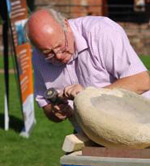Heritage Construction, Access To Training
Focus on the issues
Recently In an article for the Independent. John Edwards of English heritage, stated that from a known number of practitioners in the heritage sector currently working on historic properties, his estimation was that only 30% are “properly qualified skilled craftspeople” We should take that as from the horse’s mouth and act accordingly. (Excerpt from The independent 25/3/2011)
 In March 2009, a “Memorandum of Understanding on Maintaining Standards and Best Practice in the Built Heritage Sector in England” was agreed by the all-party parliamentary arts and heritage group, along with English Heritage C Skills and NHTG. This memorandum highlights the need to establish qualifications and certification for people working in the heritage construction sector.
In March 2009, a “Memorandum of Understanding on Maintaining Standards and Best Practice in the Built Heritage Sector in England” was agreed by the all-party parliamentary arts and heritage group, along with English Heritage C Skills and NHTG. This memorandum highlights the need to establish qualifications and certification for people working in the heritage construction sector.
To all intents and purposes, this means anyone who carries out, maintenance, repair, restoration or conservation work on any building completed prior to 1919.
The National Heritage Training Group (NHTG) a signatory to the memorandum, have undertaken comprehensive studies on the sector. Their findings although now based on 3 year old evidence, suggests that only a small proportion C 18% of people working on historic buildings, are qualified or indeed have appropriate skill or experience within the sector. To put this into perspective, some 109,000 people were known to be working in the sector during 2008. This means that over 80.000 of these have little or no qualifications to do the work. Nor do they have the knowledge of the nature of historic building techniques or materials. One can easily see that this situation is bound to have a negative effect on the wellbeing and sustainability of our precious built heritage.
 To those involved at the critical junctures between need and availability, the difficulty of recruiting suitably trained and qualified contractors is one of the most difficult of tasks. The mere fact that we do not know to what extent a contractor can interpret and or safely intervene with, an historic building, shows clearly the need for certification. Another critical issue is the lack of substantial and knowledgeable supervision. This is a critical element for any project but especially if we cannot have confidence in the workforce. Generally but not exclusively, many works on historic properties are let to the lowest tender. This is market forces at work and we cannot deny the impact this has. However it is clear that diligent and skilled supervision of the works could and would prevent some of the disasters experienced across the sector. Such problems as the use of cement on historic masonry, or bolted on truss repairs for example. It is true that a Clerk of works or conservation surveyor costs money, but so do remedial works, where in some instances the damage is irretrievable.
To those involved at the critical junctures between need and availability, the difficulty of recruiting suitably trained and qualified contractors is one of the most difficult of tasks. The mere fact that we do not know to what extent a contractor can interpret and or safely intervene with, an historic building, shows clearly the need for certification. Another critical issue is the lack of substantial and knowledgeable supervision. This is a critical element for any project but especially if we cannot have confidence in the workforce. Generally but not exclusively, many works on historic properties are let to the lowest tender. This is market forces at work and we cannot deny the impact this has. However it is clear that diligent and skilled supervision of the works could and would prevent some of the disasters experienced across the sector. Such problems as the use of cement on historic masonry, or bolted on truss repairs for example. It is true that a Clerk of works or conservation surveyor costs money, but so do remedial works, where in some instances the damage is irretrievable.
So what can we do? I am sure that any craftsperson would want to be seen as professional, skilled and knowledgeable, but objective credibility can only be achieved through the recognition of achievement against an established standard. Notwithstanding the previous access to “Grandfather Rights” now extinct, we have such standards available to practicing craftspeople and supervisors in the form of NVQs and the CSCS card system. “This is underwritten by C Skills”. The NVQ qualifications are competence based and reflect the competence and skill levels which already exist. Therefore we are looking towards the C 18% of contractors working in the sector, who have the skills and knowledge to do the work. This also offers the credibility of a CSCS card for the proven craftsperson. Our Conservation supervisors who support them can follow a similar route to certification.
I am sure that any craftsperson would want to be seen as professional, skilled and knowledgeable, but objective credibility can only be achieved through the recognition of achievement against an established standard. Notwithstanding the previous access to “Grandfather Rights” now extinct, we have such standards available to practicing craftspeople and supervisors in the form of NVQs and the CSCS card system. “This is underwritten by C Skills”. The NVQ qualifications are competence based and reflect the competence and skill levels which already exist. Therefore we are looking towards the C 18% of contractors working in the sector, who have the skills and knowledge to do the work. This also offers the credibility of a CSCS card for the proven craftsperson. Our Conservation supervisors who support them can follow a similar route to certification.
This does not however address the needs of the remainder of the workforce engaged in heritage work. These contractors and craftspeople need training and or up skilling to ensure their knowledge and understanding of the work, is appropriate and fit for purpose. This requires there to be opportunity to train and gain qualifications towards certified status. The NHTG and its regional centres such as the NHTA Yorkshire and the Humber, have established the need, but have not yet built delivery capacity to serve the sector.
There are some short training interventions available across the country via full, cost or sometimes part funded programmes, but not in quantity, nor in range, suitable to give access to all who need it. Also there are some brave attempts being made to develop an approach to apprenticeship like programmes. However these can only be established on the back of funding streams such as HLF skills for the future and others. The impact is limited to a few lucky individuals who manage to secure such placements. There is no accepted framework for apprenticeships in heritage skills at present. We lack both a technical certificate and the will to fund the programme. That means that young people cannot enter the sector at large, nor choose a career as a heritage craftsperson at 14 or 16 years old. This in turn means that we are creating another skills gap in the heritage craft sector for the future.
It would seem reasonable that we engage with the current craft sector, to establish some mainstream training and support programmes Nationwide. This would give our craftspeople the opportunity to learn, up skill and gain knowledge of conservation and restoration. Without this intervention, there will be very few opportunities for younger craftspeople to be trained adequately with an employer. Indeed, young people entering the sector have no promise of a qualification, nor a career path and have small hope of substantial and appropriate instruction from their employer.
Background and message:
Recently In an article for the Independent. John Edwards of English heritage, stated that from a known number of practitioners in the heritage sector currently working on historic properties, his estimation was that only 30% are “properly qualified skilled craftspeople” We should take that as from the horse’s mouth and act accordingly. (Excerpt from The independent 25/3/2011)
In 2010 and earlier in 2001 Nigel Crowe of British waterways has been observing the state of the heritage workforce and offering advice on how to remedy the retirement time bomb and the current shortage of skills in the sector. (Context 71 Sept 2001) (Context 117 Nov 2010) One method he suggests is to enhance the training of the some 16,000 volunteers who work on the Waterways. This seems eminently sensible, in establishing criteria for skills of volunteers, we could offer some confidence that under supervision, some of the more basic conservation work can be in safe hands.
In order to make this work it follows that supervisors need to be trained and qualified in order to support the volunteers. This is being done through NVQ level 3 Conservation supervision qualifications. This work is currently part funded by the “Train 2 Gain” programme, without which this would represent an acute financial burden on BW. However this approach shows how an organisation can rally to generate successful interventions, in order to up skill their workforce and influence the sector more broadly in a positive way.
Although a lack of funding for training haunts the sector, we should seek out ways, either independently or as organisations and groups, to develop training interventions which address the fundamental craft areas which we rely on to maintain our built heritage.
We need training and education for: Masonry, Brickwork, Lime mortars, pointing, rendering, Carpentry and roofing. All of these areas are underrepresented in the skilled craft areas of our sector.
We cannot blame anyone specifically for the situation, as this is a legacy of poor investment in the education of our young people over the past 30 years. However we can decide to do something about it.
Heritage Craft Alliance are launching their heritage craft training centre in Yorkshire this summer. The centre is dedicated to the delivery of craft skills for the heritage sector. Courses will range from up skilling for existing craftspeople, to training and assessment of formal accredited qualifications and will be backed up by partnerships across the country. Access to training and education must be made available, especially if we are to enforce one of the main aims of the memorandum of understanding, which is; Encourage all heritage funding agencies from 2010 to insist on appropriately carded contractors and craftspeople to carry out all work on grant aided heritage projects and another to; promote the need to appoint knowledgeable qualified and experienced sector professionals and contractors/craftspeople for all aspects of pre 1919 building projects.
If we are to enforce this, we must offer access to the qualifications and the CSCS card. This can only be achieved by offering accessible, affordable training and education to all those who need it.
Glenn Young Director
Heritage Craft Alliance Ltd. http://www.heritagecraftalliance.co.uk/













